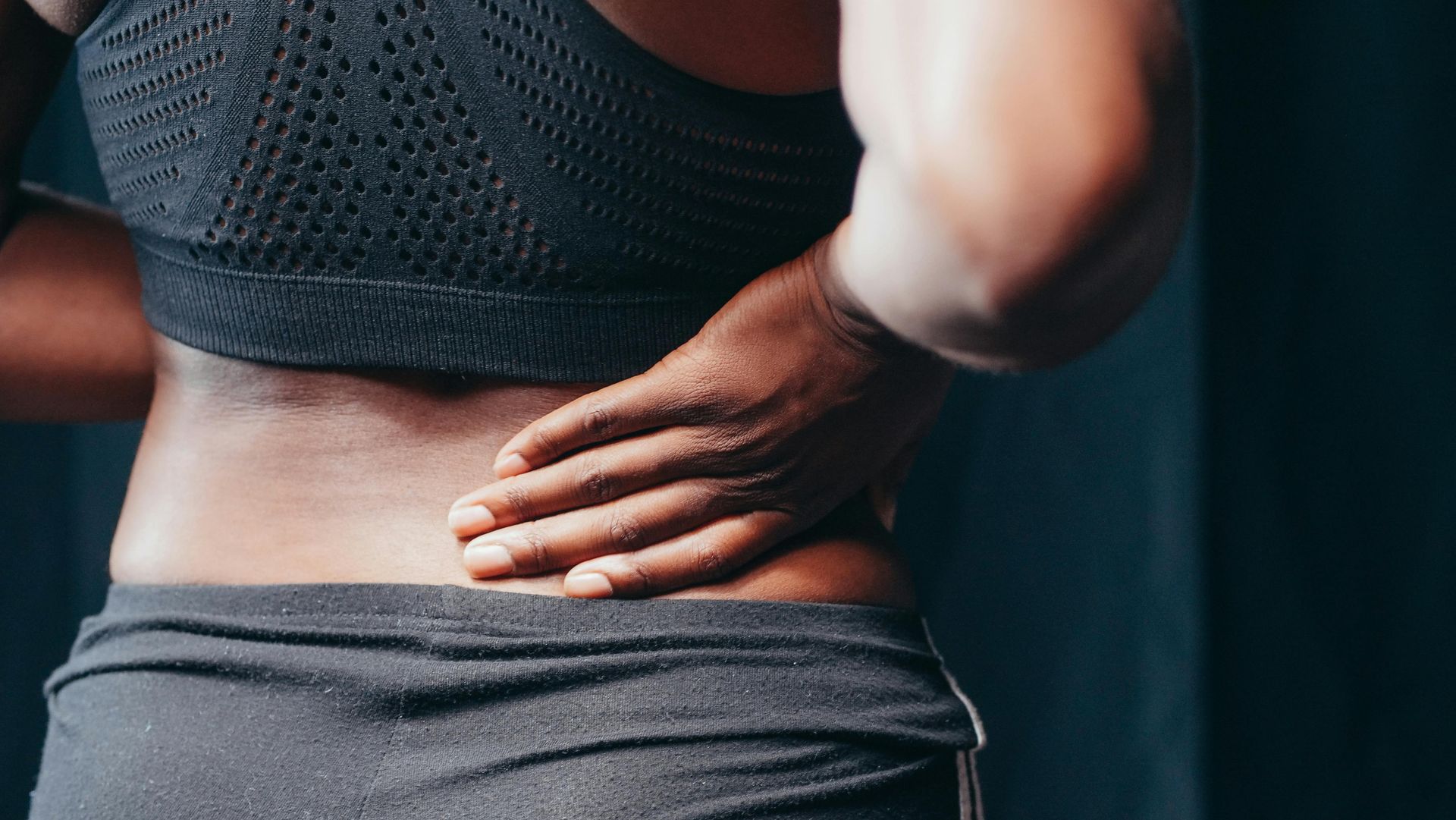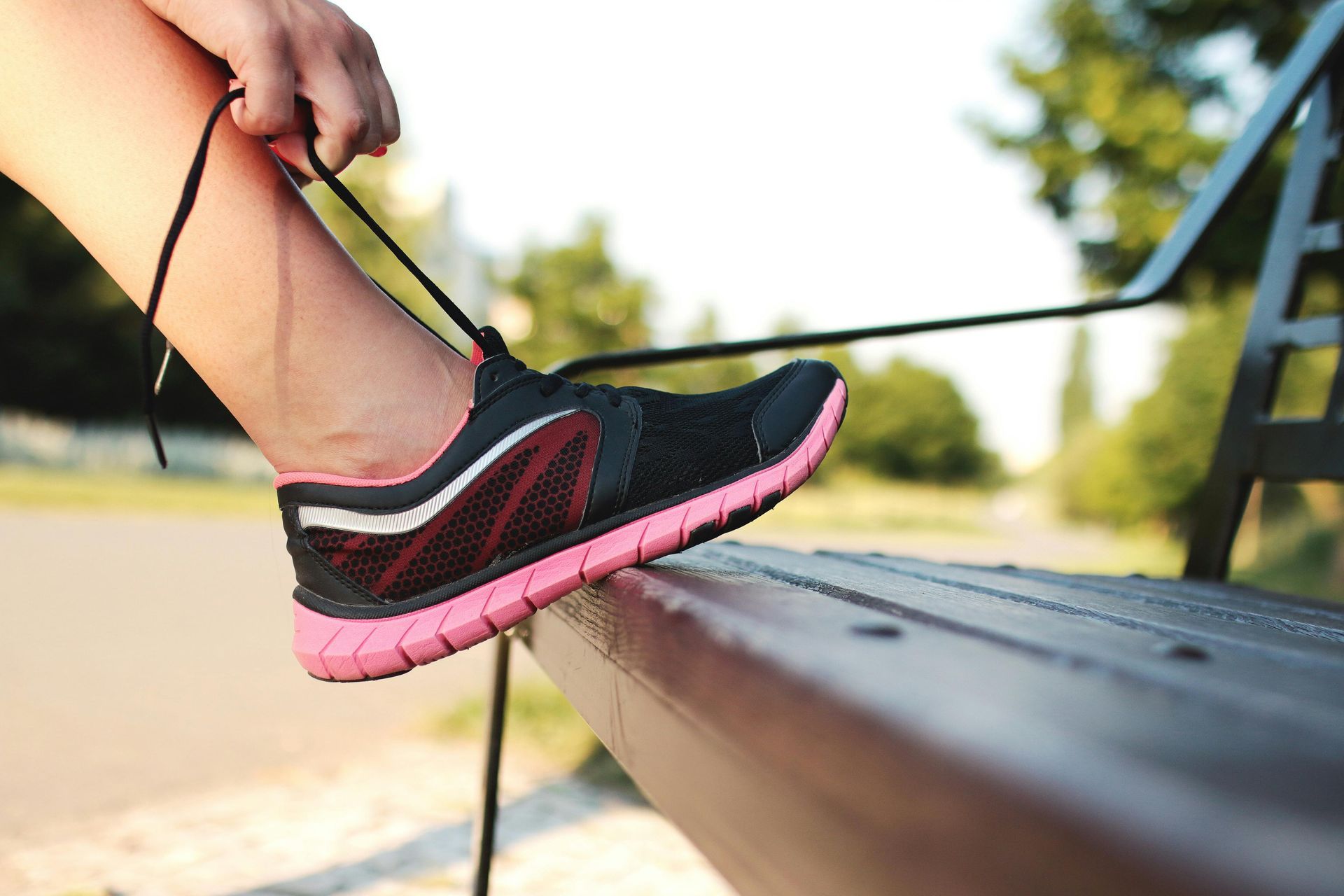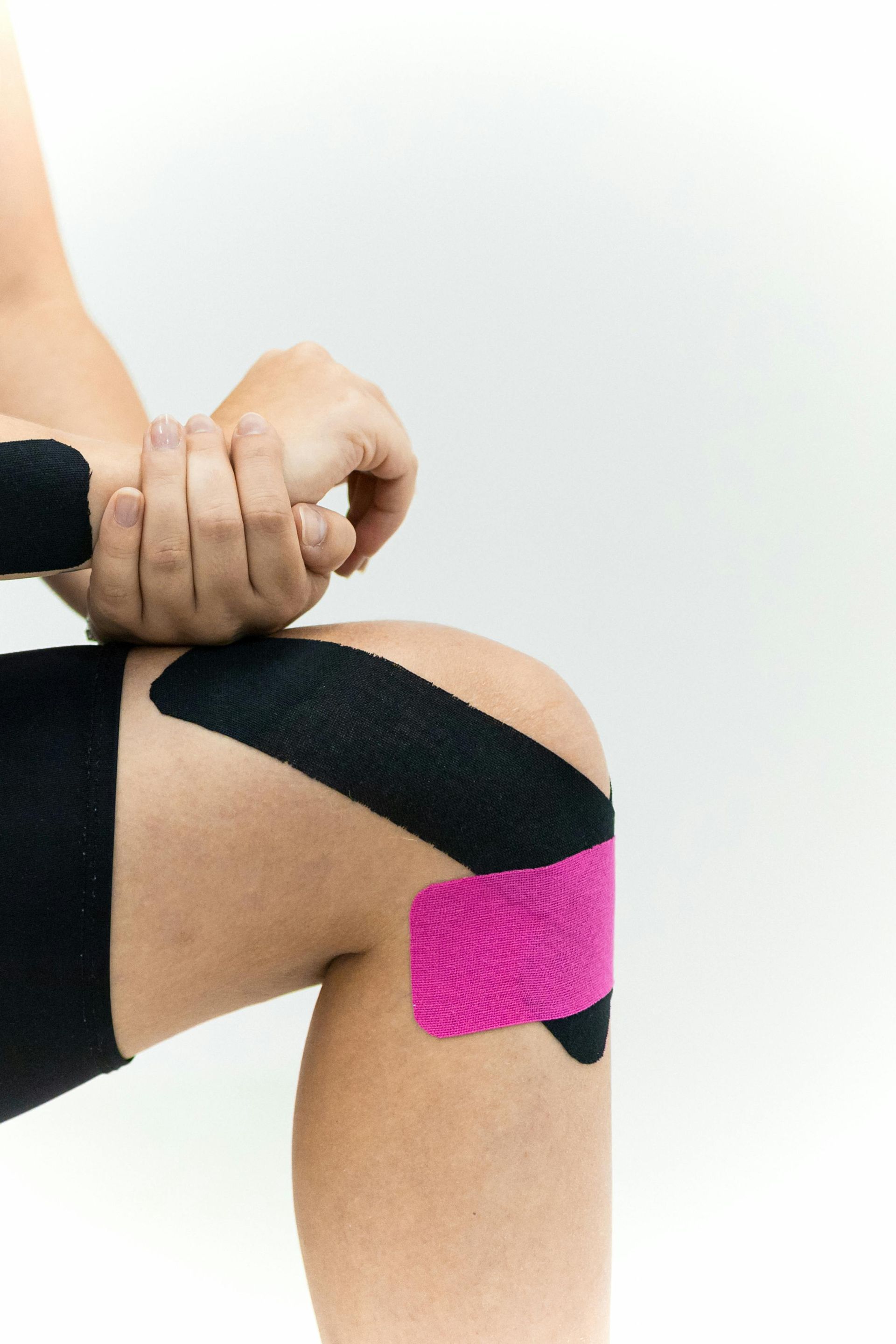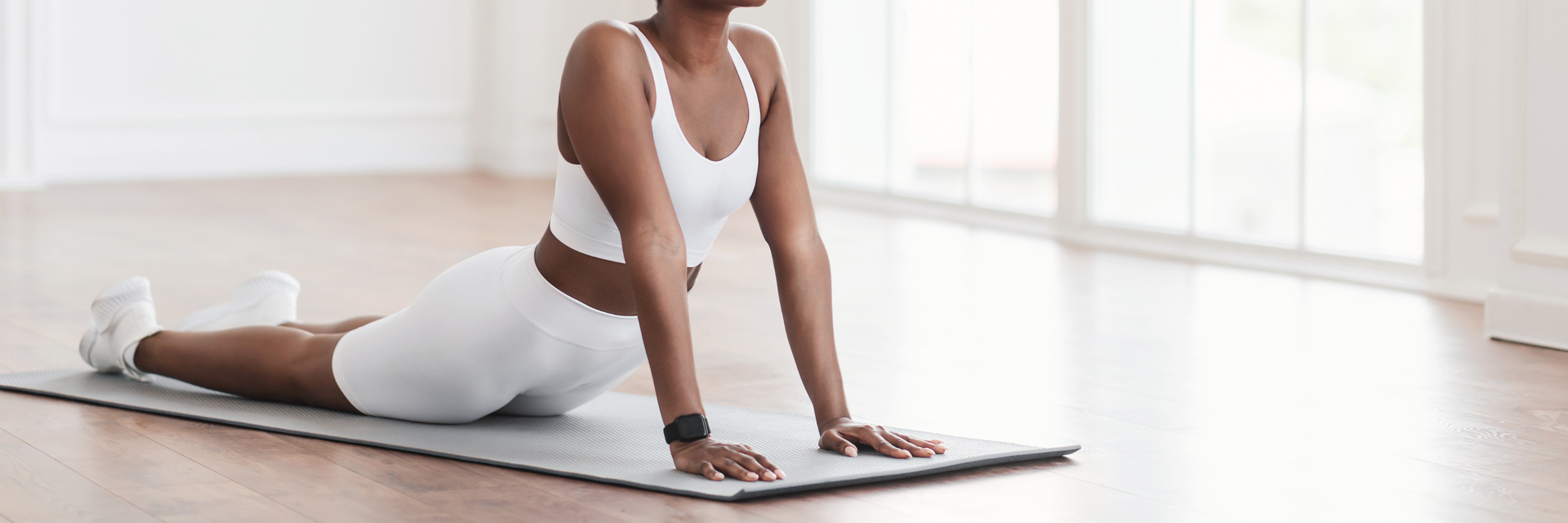Blog

December 18, 2024
Pelvic floor physical therapy is an essential, yet often overlooked, component of healthcare. The pelvic floor is a group of muscles located at the base of the pelvis that support the bladder, uterus (in people with uteruses), rectum, and other pelvic organs. These muscles also play a crucial role in bladder and bowel control, sexual function, and stability of the spine and pelvis. When the pelvic floor isn’t functioning optimally, it can lead to various issues, from bladder dysfunction to chronic pain. Knowing when to seek help from a pelvic floor physical therapist (PFPT) can make a significant difference in managing and improving these conditions. 1. Bladder Health Issues Problems with bladder health are among the most common reasons to consult a pelvic floor physical therapist. These issues may include: Urinary Incontinence: Leakage of urine when coughing, sneezing, laughing, or exercising (stress incontinence), or experiencing a sudden, intense urge to urinate (urge incontinence). Overactive Bladder: Frequent urination or feeling like you always need to go, even after emptying your bladder. Incomplete Emptying: Struggling to fully empty your bladder, which can lead to discomfort or recurrent urinary tract infections (UTIs). Pelvic floor physical therapy can help retrain these muscles, improve bladder control, and restore confidence in daily activities. 2. Pelvic Pain Pelvic pain can be complex and challenging to treat, but PFPT often provides significant relief. Conditions that can benefit from pelvic floor therapy include: Vulvodynia and Vaginismus: Persistent pain around the vulva or involuntary muscle tightness during penetration. Interstitial Cystitis (Painful Bladder Syndrome): Chronic bladder pain and pressure that mimic recurrent UTIs without an infection. Postpartum Pelvic Pain: Many people experience lingering pelvic pain after childbirth due to tears, episiotomies, or muscle dysfunction. Therapists use techniques like manual therapy, stretching, and biofeedback to reduce pain and improve function. 3. Menstrual and Period Pain Severe menstrual cramps, also known as dysmenorrhea, can sometimes stem from tightness or dysfunction in the pelvic floor muscles. While period pain is common, it shouldn’t interfere with your ability to go about your daily life. Conditions such as endometriosis or adenomyosis often exacerbate period pain, and a PFPT can help by addressing muscle imbalances and tension that may contribute to discomfort. 4. Constipation and Bowel Issues Pelvic floor muscles play a key role in bowel movements. Dysfunction in these muscles can result in: Chronic Constipation: Straining excessively or feeling as if you haven’t completely emptied your bowels. Fecal Incontinence: Accidental leakage of stool, often related to weakened pelvic floor muscles or nerve damage. Rectal Pain or Pressure: Painful sensations during or after bowel movements. Pelvic floor therapy can help you learn how to coordinate your pelvic muscles with your diaphragm and abdominal muscles for improved bowel function. 5. Pregnancy and Postpartum Recovery Pregnancy and childbirth place significant strain on the pelvic floor, leading to issues like: Diastasis Recti: Separation of the abdominal muscles, which can weaken core stability. Prolapse: Drooping of pelvic organs into the vaginal canal due to muscle or tissue weakness. Postpartum Pain: Discomfort during activities like sitting, walking, or intercourse after delivery. PFPT helps pregnant individuals prepare for labor, minimize complications, and support postpartum healing. 6. Sexual Health Concerns If sex is painful, unenjoyable, or otherwise problematic, a pelvic floor physical therapist can help. Common issues include: Pain During Intercourse (Dyspareunia): This may be due to muscle tightness, scarring from childbirth, or other conditions. Erectile Dysfunction: Men with pelvic floor dysfunction may experience difficulty achieving or maintaining an erection. Orgasmic Dysfunction: Difficulty reaching orgasm can sometimes be traced back to pelvic floor issues. 7. Orthopedic or Chronic Pain Conditions Pelvic floor dysfunction often overlaps with other pain syndromes, such as: Low Back Pain: Tight or weak pelvic floor muscles can destabilize the pelvis and strain the lower back. Hip Pain: Unbalanced pelvic floor muscles can refer pain to the hips or exacerbate hip joint dysfunction. 8. General Wellness and Preventive Care You don’t have to wait for a problem to arise to see a pelvic floor physical therapist. Preventive care can be invaluable for: Athletes involved in high-impact sports like running or weightlifting. Individuals preparing for or recovering from surgery in the pelvic region. Anyone looking to improve their core strength, posture, or overall pelvic health. When to Seek Help If you experience any of the above conditions, consider reaching out to a pelvic floor physical therapist. Early intervention can prevent minor issues from becoming chronic problems. No matter your age, gender, or health history, prioritizing pelvic health is a proactive step toward overall well-being. Make an appointment at Bloom Wellness today to begin your journey!

December 11, 2024
Pregnancy is a transformative journey, bringing immense joy and significant physical changes. Among the many areas affected by these changes is the sacroiliac (SI) joint, a crucial structure in your pelvis. SI joint pain is a common concern during pregnancy, often causing discomfort and limiting mobility. In this blog, we’ll explore the SI joint, how pregnancy impacts it, and effective exercises to alleviate the pain.

November 30, 2024
A cesarean section (C-section) is a common surgical procedure used to deliver a baby, leaving many women with a horizontal scar just above the pubic bone. While this scar is a natural part of the healing process, it can sometimes lead to complications if not properly addressed. Adhesions, restricted mobility, and scar sensitivity are common issues associated with C-section scars. Learning how to care for and mobilize these scars can significantly improve recovery and overall function. Understanding C-Section Scar Healing After surgery, the body creates scar tissue as part of the healing process. This tissue replaces normal skin and muscle but lacks the flexibility and elasticity of the original tissue. In some cases, the scar tissue extends deeper into the layers of the abdominal wall, creating adhesions that can limit mobility, cause discomfort, or even contribute to pelvic floor dysfunction. While every scar heals differently, proactive management can help minimize long-term complications. When to Start Scar Mobilization It’s essential to allow your body adequate time to heal before beginning scar mobilization. Most healthcare providers recommend waiting 6 to 8 weeks post-surgery or until the incision is fully closed and cleared by a medical professional. Always consult your doctor or physical therapist before beginning any scar care regimen. How to Mobilize Your C-Section Scar Scar mobilization involves gentle massage techniques designed to improve blood flow, reduce adhesions, and restore tissue mobility. Here are some tips for effective scar mobilization: Prepare Your Skin: Ensure your hands are clean, and use a gentle oil or moisturizer to reduce friction on the skin. Start Gently: Begin with light pressure, slowly increasing as tolerated. Use your fingertips to massage around the scar in circular motions, moving from superficial layers to deeper tissues over time. Techniques to Try: Rolling: Pinch the skin gently above and below the scar and roll it between your fingers. Stretching: Place two fingers on either side of the scar and stretch it gently in all directions. Sweeping: Use one or two fingers to glide across the scar horizontally and vertically. Be Consistent: Spend 5-10 minutes a day on scar mobilization to achieve the best results. What to Watch For While scar mobilization can be beneficial, it’s essential to be mindful of your body’s response. Stop if you notice increased pain, redness, or swelling, and consult a healthcare professional if needed. The Importance of Rebuilding Your Core After a C-section, your abdominal muscles and core stability can be significantly weakened. Rebuilding your core is crucial for restoring strength, improving posture, and preventing back or pelvic floor issues. Gentle core activation exercises, such as diaphragmatic breathing and pelvic tilts, are a great starting point. Over time, you can progress to more challenging movements with the guidance of a physical therapist. If you’re unsure how to get started or are experiencing discomfort, Bloom Wellness is here to help. Our team specializes in postnatal recovery, including scar mobilization and core strengthening. Together, we’ll create a personalized plan to help you heal, feel strong, and return to the activities you love.

November 21, 2024
Vaginismus is a condition that affects many women, causing involuntary contractions or tightening of the vaginal muscles, making penetration, such as during sexual intercourse, gynecological exams, or tampon insertion, difficult or even impossible. This condition can lead to both physical and emotional distress, and its causes can vary, ranging from psychological factors such as trauma or anxiety to physical issues like pelvic floor dysfunction. The good news is that vaginismus is treatable, and physical therapy is one of the most effective approaches for managing and overcoming this condition. Pelvic floor physical therapy targets the muscles of the pelvic region, which are often the root cause of vaginismus, and provides relief through exercises, education, and hands-on techniques. Physical Therapy Treatment for Vaginismus Physical therapy for vaginismus typically involves a multifaceted approach that is tailored to each individual’s needs. The primary focus is on the pelvic floor muscles, which are responsible for the involuntary contractions associated with this condition. Pelvic Floor Muscle Relaxation One of the first steps in treatment is teaching the patient how to relax the pelvic floor muscles. Physical therapists may use breathing techniques, gentle manual therapy, or biofeedback to help the patient become aware of muscle tension and work toward relaxing those muscles consciously. Dilator Therapy Another common treatment involves the use of vaginal dilators. These are graduated devices that the patient can insert into the vagina to gradually stretch the vaginal muscles and reduce sensitivity and tightness. A physical therapist will guide the patient through this process, starting with the smallest dilator and slowly progressing to larger sizes over time, ensuring comfort and safety. Stretching and Strengthening Exercises Pelvic floor exercises, including both stretching and strengthening, can help improve flexibility and control of the vaginal muscles. A therapist may guide the patient in exercises to strengthen the pelvic floor muscles, which can improve overall pelvic health and reduce the likelihood of further tightening. Education and Emotional Support Often, vaginismus is compounded by fear, anxiety, or emotional trauma. A physical therapist may provide education about the anatomy and function of the pelvic region to help reduce feelings of shame or fear. Additionally, incorporating relaxation techniques or mindfulness practices can assist in addressing the emotional factors contributing to vaginismus. Vaginismus can significantly impact a woman’s quality of life, but with the right treatment plan, including pelvic floor physical therapy, many women can find relief and regain control over their bodies. If you're struggling with vaginismus or would like more information on how physical therapy can help, Bloom Wellness offers specialized support tailored to your needs. Our team is here to guide you on the path to healing and empowerment.

October 24, 2024
Constipation is a common digestive issue that affects millions of people worldwide. Characterized by infrequent bowel movements or difficulty passing stools, constipation can lead to discomfort, bloating, and a feeling of fullness. While occasional constipation can be normal, chronic issues may require lifestyle changes or professional intervention. Here are five effective tips to help manage constipation, as well as guidance on when to see a pelvic floor physical therapist. 1. Increase Fiber Intake One of the most effective ways to alleviate constipation is to increase your dietary fiber. Fiber adds bulk to your stool and helps it move through the intestines more easily. Aim for at least 25 grams of fiber per day, which can be achieved by incorporating more fruits, vegetables, whole grains, and legumes into your diet. Some excellent sources of fiber include: Apples Pears Oats Lentils Chia seeds Start gradually to prevent gas and bloating, and always drink plenty of water to help fiber do its job effectively. 2. Stay Hydrated Dehydration can lead to hard stools and difficulty in passing them. It’s essential to drink enough fluids—ideally, around eight 8-ounce glasses of water daily. Herbal teas and clear broths can also contribute to your fluid intake. Monitoring your urine color can help; pale yellow usually indicates adequate hydration, while dark yellow suggests you might need to drink more. 3. Regular Physical Activity Physical activity stimulates the digestive system and can help alleviate constipation. Aim for at least 30 minutes of moderate exercise most days of the week. Activities like walking, cycling, and yoga can encourage bowel movements by promoting blood flow to the intestines. Even simple movements, like stretching or engaging in household chores, can contribute to better digestive health. 4. Establish a Routine Creating a regular bathroom routine can help your body learn when it’s time to go. Try to set aside a few minutes each day, especially after meals, to sit on the toilet. Responding to your body’s natural urges promptly, rather than ignoring them, can also train your system to maintain regular bowel movements. 5. Consider Probiotics Probiotics are beneficial bacteria that can help maintain gut health and promote regularity. Foods like yogurt, kefir, sauerkraut, and other fermented foods are great sources of probiotics. If you find that dietary changes aren’t enough, you might consider a probiotic supplement. However, it's wise to consult a healthcare provider before starting any new supplement. When to See a Pelvic Floor Physical Therapist If you’ve tried these tips and still struggle with constipation, it might be time to consult a pelvic floor physical therapist. These specialists can help address issues related to the pelvic floor muscles, which play a crucial role in bowel function. Signs that you may benefit from this type of therapy include: Chronic constipation that doesn’t improve with lifestyle changes Pain during bowel movements A feeling of incomplete evacuation Issues with incontinence or pelvic pain A pelvic floor physical therapist can provide tailored exercises, techniques, and strategies to help you regain control over your bowel function and improve overall pelvic health. Constipation can be uncomfortable and frustrating, but there are many strategies you can implement to manage it effectively. By increasing fiber intake, staying hydrated, exercising regularly, establishing a routine, and considering probiotics, you can take significant steps toward relief. If symptoms persist, don’t hesitate to seek help from a pelvic floor physical therapist who can guide you on your path to better digestive health. Remember, addressing constipation early can lead to a more comfortable and healthy life.

October 17, 2024
For many, running is a great way to stay fit and relieve stress, but for some individuals, it can come with an unexpected and uncomfortable issue—stress incontinence. This condition, characterized by involuntary leakage of urine during physical activities like running, can affect both men and women, though it is more common among women, especially postpartum. While stress incontinence is a frustrating and sometimes embarrassing problem, it is also manageable and treatable. In this blog, we'll explore what stress incontinence is, why it happens when running, exercises to help manage it, and when to seek professional help for lasting relief. What Is Stress Incontinence? Stress incontinence occurs when there’s increased pressure on the bladder, which overpowers the pelvic floor muscles responsible for maintaining bladder control. Activities that put sudden pressure on the abdomen—such as running, jumping, or even coughing and sneezing—can cause urine leakage. The name "stress" refers to the physical stress placed on the bladder, not emotional stress, although emotional stress can exacerbate symptoms in some cases. Running, with its high-impact nature, can be particularly challenging for those with stress incontinence because the repeated pounding on the ground and increased intra-abdominal pressure can overwhelm the pelvic floor muscles, leading to leakage. Why Does Stress Incontinence Happen While Running? The pelvic floor muscles, located at the base of the pelvis, are key to supporting bladder control. When these muscles weaken or lose their coordination, they may struggle to keep the bladder sphincter closed when it experiences pressure. Several factors can contribute to this weakening: Pregnancy and childbirth: Vaginal delivery can stretch or damage the pelvic floor muscles, making it harder to control bladder function, especially during high-impact activities like running. Hormonal changes: Hormonal shifts during pregnancy, postpartum, or menopause can affect the strength and elasticity of pelvic muscles, leading to leakage. Age: Over time, the pelvic floor muscles naturally weaken, contributing to stress incontinence. High-impact activities: Running, with its repetitive impact on the pelvic region, can stress the bladder and pelvic floor, especially if the muscles are already weakened. Exercises to Manage Stress Incontinence The good news is that strengthening the pelvic floor muscles can significantly reduce or even eliminate stress incontinence symptoms. By focusing on targeted exercises that strengthen these muscles, you can improve your bladder control and continue running with confidence. 1. Kegel Exercises Kegels are the cornerstone exercise for strengthening the pelvic floor muscles. These exercises focus on contracting and relaxing the muscles that control urination, which helps improve bladder control. To perform Kegels: Identify the pelvic floor muscles by stopping the flow of urine mid-stream (do this only to identify the muscles, not as a regular exercise). Contract these muscles for 5-10 seconds, then release for the same amount of time. Perform 10-15 repetitions, 2-3 times a day. 2. Bridge Pose Bridge pose helps strengthen not only the pelvic floor but also the glute and core muscles, which provide additional support to the pelvic region. To perform a bridge pose: Lie on your back with your knees bent and feet flat on the floor. Lift your hips toward the ceiling, engaging your glutes and pelvic floor muscles. Hold for a few seconds, then lower your hips back down. Repeat 10-15 times 3. Heel Slides Heel slides help strengthen the pelvic floor while gently engaging the abdominal muscles, making them great for those recovering from pregnancy or dealing with mild incontinence. To perform heel slides: Lie on your back with your knees bent. Slowly slide one heel down until your leg is straight, keeping the other knee bent. Slide the heel back up to the starting position and repeat on the other leg. Perform 10-15 repetitions per leg. 4. Squats Squats engage the pelvic floor muscles and core, while also strengthening the legs and glutes, which are important for running. To perform squats: Stand with feet shoulder-width apart. Lower your hips as if sitting into a chair, keeping your weight in your heels. Engage your pelvic floor muscles as you rise back up to standing. Repeat 10-15 times. Tips for Managing Stress Incontinence While Running In addition to exercises, there are a few practical tips you can try to manage stress incontinence during your runs: Empty your bladder before running: Make sure to use the restroom before you head out for a run to minimize the chances of leakage. Wear moisture-wicking, absorbent clothing: Wearing proper running gear that can manage moisture can help you feel more comfortable if leakage does occur. Pace yourself: If you notice more leakage during intense runs, consider adjusting your pace. You can gradually increase your speed as your pelvic floor muscles strengthen. Strengthen your core: A strong core helps support the pelvic region, so incorporating core exercises into your routine can improve overall stability and reduce incontinence. When to Seek Professional Help While stress incontinence is manageable for many people through pelvic floor exercises and lifestyle changes, some cases may require more focused care. If you find that your symptoms persist or significantly impact your quality of life, it’s important to seek professional help. Pelvic floor therapy, offered by specialized clinics, can provide personalized treatments that address your specific needs. At our clinic, we offer pelvic floor therapy tailored to runners and individuals experiencing stress incontinence. Our therapists can guide you through advanced techniques, help with pelvic floor muscle retraining, and develop a personalized exercise program to improve bladder control and strengthen your pelvic support.

October 16, 2024
Pubic Symphysis Dysfunction (PSD) is a common condition during and after pregnancy, caused by the loosening of pelvic ligaments, which leads to pain and instability in the pelvis. This blog explains the causes of PSD and provides exercises like pelvic tilts, Kegels, and glute bridges that can help strengthen the pelvic area and relieve discomfort. Additionally, it encourages individuals to seek professional pelvic floor therapy if pain persists, offering personalized treatment for lasting relief. Our clinic is here to help those struggling with PSD recover and regain mobility.

October 16, 2024
Knee pain after pregnancy is a common issue many new mothers face due to factors like weight gain, posture changes, and hormonal shifts. This post outlines practical ways to manage postpartum knee pain, including gentle strengthening exercises, effective stretching techniques, choosing proper footwear, and maintaining a joint-healthy diet. It also highlights the importance of hydration and suggests seeking professional physical therapy if the pain persists. With these strategies, new moms can address knee discomfort and focus on enjoying time with their newborns pain-free.


